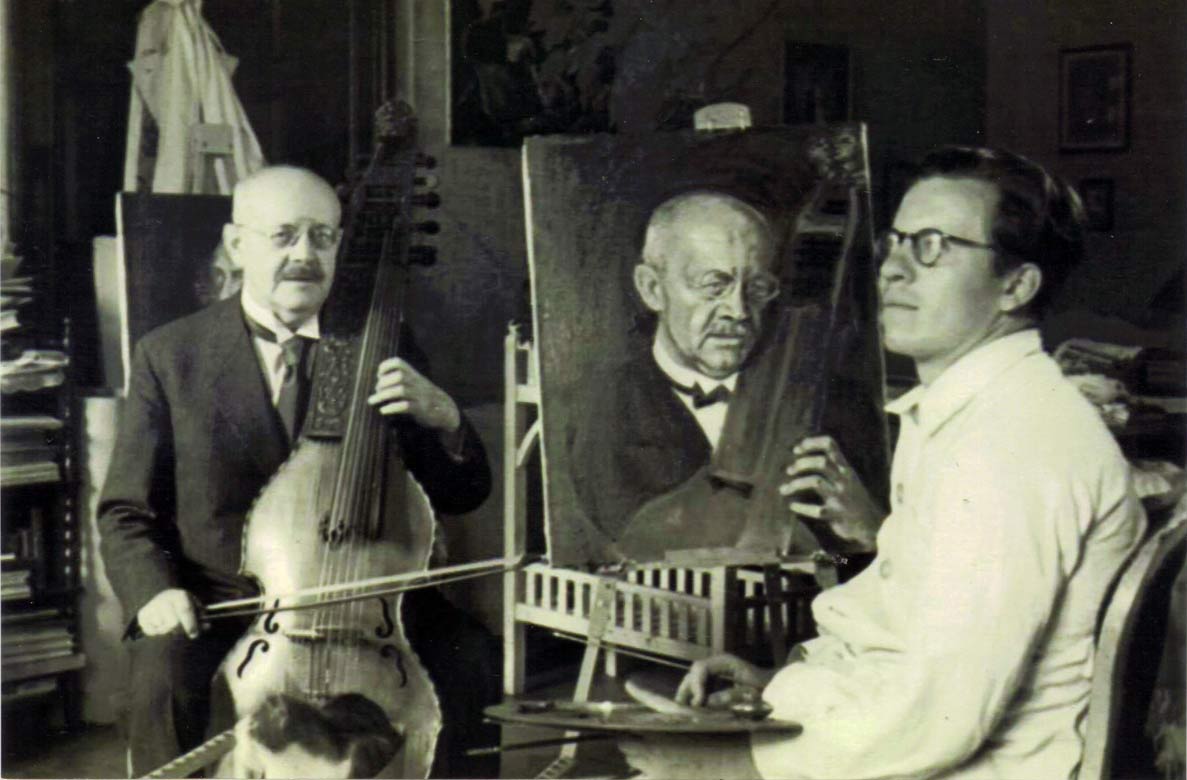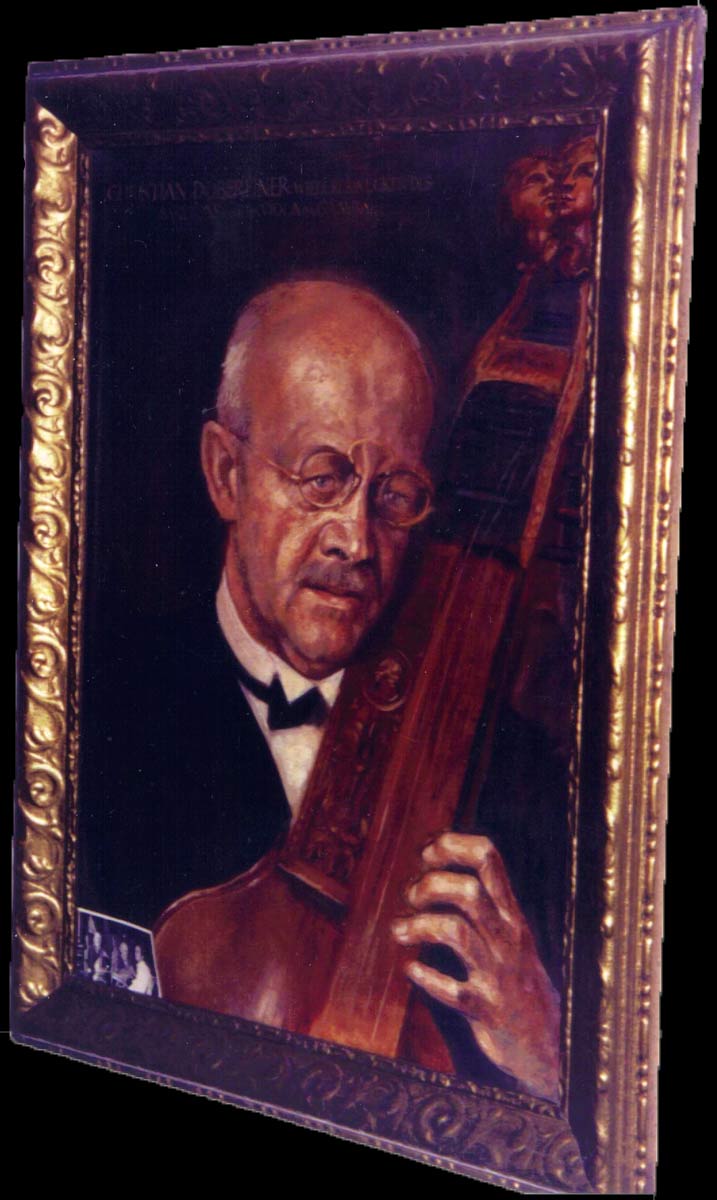Baryton after Simon Schodler, 1782
by Ferdinand Wilhelm Jaura, 1934
Baryton trio in Tenerife, 2005: José Vázquez, Christa Opriessnig, Lúcia Krommer
The correct name for this instrument is actually “Viola di Pardone”. The story has it, that a criminal awaiting his execution in an English dungeon invented this adorable instrument. The Lord, when he experienced him playing upon it, was so thrilled that he instantly pardonned him, from whence the name. A baryton is basically a viola da gamba of six or seven strings, but provided with a large number (varies greatly between models) of thin, metal strings running behind the fingerboard that cannot be played with the bow, but resonate magically when the upper strings are bowed, much like the viola d’amore. But what’s more, these metal strings can be ably plucked by the thumb of the left hand while one bows the upper strings, thus providing one’s own accompaniment, a feat that many try but only few succeed! Prince Esterhazy was a passionate player of the viola di pardone, summoned the best soloists to his court and overwhelmed his composers with commissions for more works for it; thanks to this we now possess a rich repertoire for the instrument; Haydn alone composed at least 126 trios, a few duets, octets, etc. which are veritable gems.
Christian Döbereiner ordered this baryton from the able Munich violin maker, Ferdinand Wilhelm Jaura in 1934 and in 1936 the very first performance in modern times with a baryton took place in Munich – on our instrument, of course – Trio in D-Major by Haydn, played by Döbereiner himself. A critic from this concert appeared early in 1937 and can be seen on the Orpheon website.
A prominent soloists who previously owned and played this baryton: Christian Döbereiner (1874-1961):
Christian Döbereiner was portrayed in oil with a baryton. Very puzzling detail: in the photograph he is holding the baryton in our collection: the head is of a bearded man. However, in the oil painting, the baryton shown, also by Jaura, has two angels' heads; this instrument exists also today. We are trying to trace its present location. Why did the painter exchange the barytons?
A photograph of Christian Döbereiner, examining a baryton in the museum in Munich. In addition to championing the viol in Germany and the USA, Mr. Döbereiner also authored one of the first tutors for playing on the viol da gamba, which was published very early into the 20th C. He edited a substantial number of works for the viola da gamba and for the baryton.
Concert in October, 1936:"Christian Döbereiner brachte als Dirigent des Münchner Bach-Vereins Werke von J. S. Bach, Antonio Vivaldi, Franz Xaver Richter, Johann Stamitz, Johann Christian Bach und Wolfgang Amadeus Mozart zur Wiedergabe. Ferner spielte er zum 1. Mal seit urdenklichen Zeiten das Baryton, nämlich im Divertimento für Baryton, Viola und Bass von Joseph Haydn. "
"As director of the Munich Bach Society Christian Döbreiner performed works by J. S. Bach, Antonio Vivaldi, Franz Xaver Richter, Johann Stamitz, Johann Christian Bach and Wolfgang Amadeus Mozart. Further he played for the first time since time immemorial the Baryton, namely, in the Divertimento for baryton, viola and bass by Joseph Haydn."
This performance took place undoubtedly on the baryton in our collection, which was at the time exactly one to two years old! Döbereiner was the one that actually commissioned this baryton from the Munich violin-maker, Ferdinand Wilhelm Jaura. Jaura made exaclty four barytons.
Hallo Claudine
in der Anlage sende ich die 2. Seite des Baryton-Konzertes vom 31.8.1937. Meines Wissens war dies das 1. Konzert meines Großvaters mit Baryton.
Ich freue mich, daß dieses Instrument in Ihren Händen ist. Meine Tante Christine Döbereiner hat es damals unter der Bedingung verkauft, dass der Käufer auf diesem Instrument auch spielen kann. Denn ein Instrument soll, so wurde mir gesagt, ohne gespielt zu werden, seinen Klang verlieren.
Vielen Dank nochmals und herzliche Grüße nach Wien und Frankreich
Ihr
Klaus Döbereiner (grandson of Christian Döbereiner)
Details: Christian Döbereiner
Performance in Lviv, Ukraina, October, 2010
| Body length | 650 mm |
| Upper width | 309 mm |
| Middle width | 219 mm |
| Lower width | 378 mm |
| Rib height | 123 mm |
| String length | 663 mm |
updated








